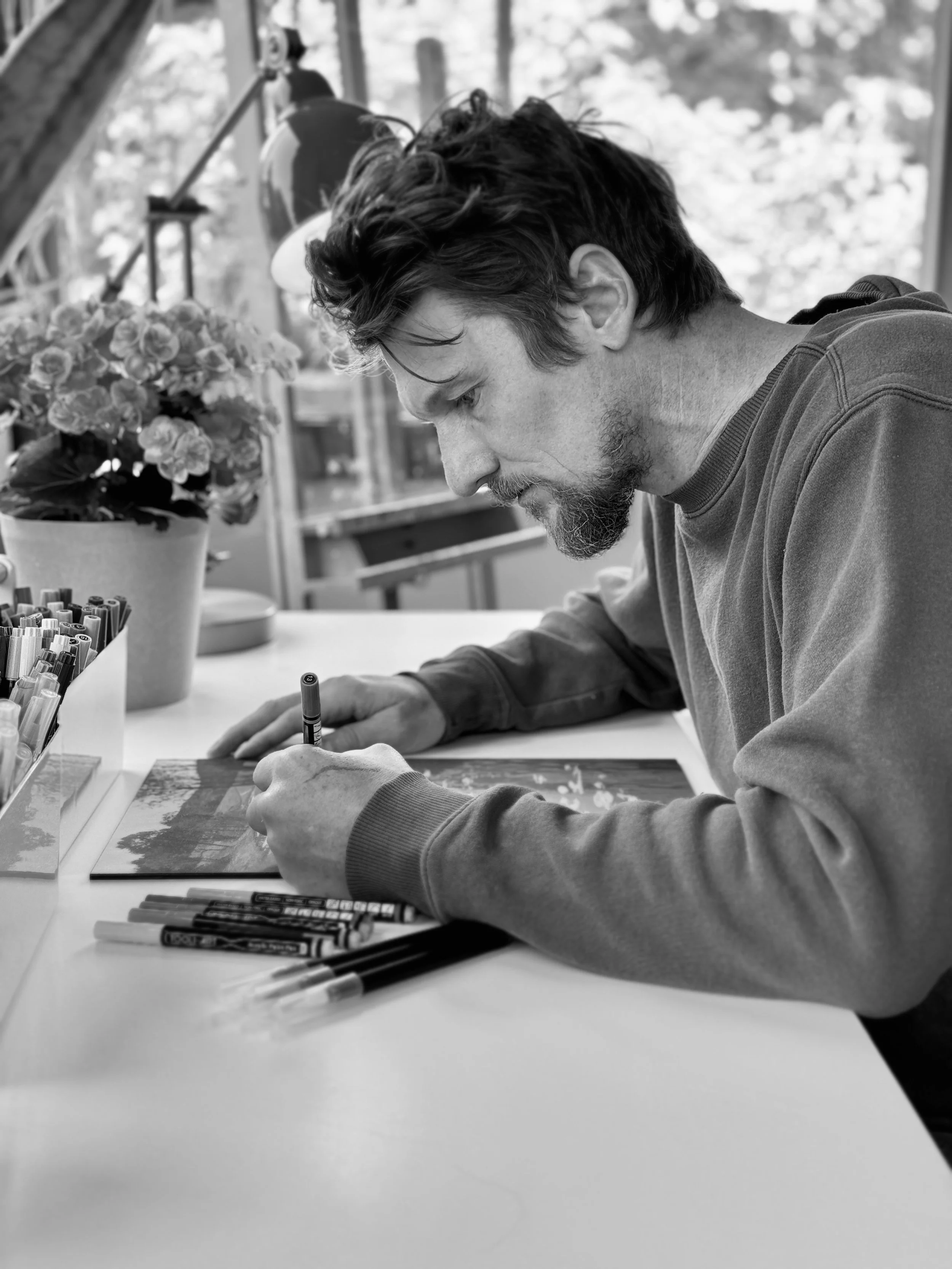Evan Abrahamson’s practice inhabits the unstable ground between intention and chance, where each mark becomes both a decision and a surrender. His paintings are less concerned with resolving form than with tracing the moment of its emergence—and its inevitable dissolution. This engagement with impermanence is not merely thematic, but embedded in the very structure of his process, where control and chance negotiate the fragile terms of their coexistence.
Educated at MCAD, Abrahamson honed a technical precision that operates not as an end in itself, but as a counterpoint to the material’s unruly agency. His early recognition, including the Presidential Scholarship, signaled not only his skill but his capacity to hold in tension the contradictory demands of craft and concept, permanence and erasure.
Each work is shaped through the interplay of disciplined technique and the embrace of chance, resulting in surfaces that hold both clarity and ambiguity. These are not merely aesthetic objects, but meditative spaces—visual inquiries into what can be known, what must be released, and what exists only in the moment of transition.
Collected in both private and public contexts, Abrahamson’s work resonates for its quiet eloquence, conceptual rigor, and capacity to invite viewers into a sustained contemplation of life’s most transient and uncertain states.
Doubt is an intrinsic part of the creative process, a necessary component of artistic expression. In painting, doubt serves as a constant reminder of the ever-evolving relationship between the artist, the medium, and the subject. It forces the artist to question their own vision and to delve deeper into the complexities of their imagination.
Doubt in painting is the crucible of creation, where the artist's uncertainty becomes a driving force in the continual exploration of the relationship between the subject, the medium, and their own imagination. It is a reminder to be humble, to be open to new possibilities, and to always be willing to question one's own assumptions.
Through doubt, the artist is able to push the boundaries of their own understanding and to expand their vision. It forces them to explore new techniques and to experiment with different approaches, leading to a deeper understanding of the medium and the subject.
Doubt also serves as a safeguard against complacency, preventing the artist from becoming too attached to their own ideas and limiting their growth as a creator. It is a reminder to stay humble and to never stop learning, to always be open to new perspectives and to never be afraid to challenge one's own beliefs.
In painting, doubt is an essential part of the creative process, a necessary component of artistic expression. It is a reminder to be humble, to question one's own assumptions, and to never stop exploring the relationship between the subject, the medium, and the artist's own imagination.
